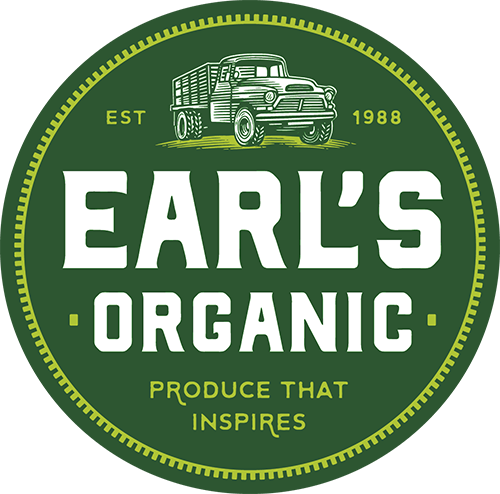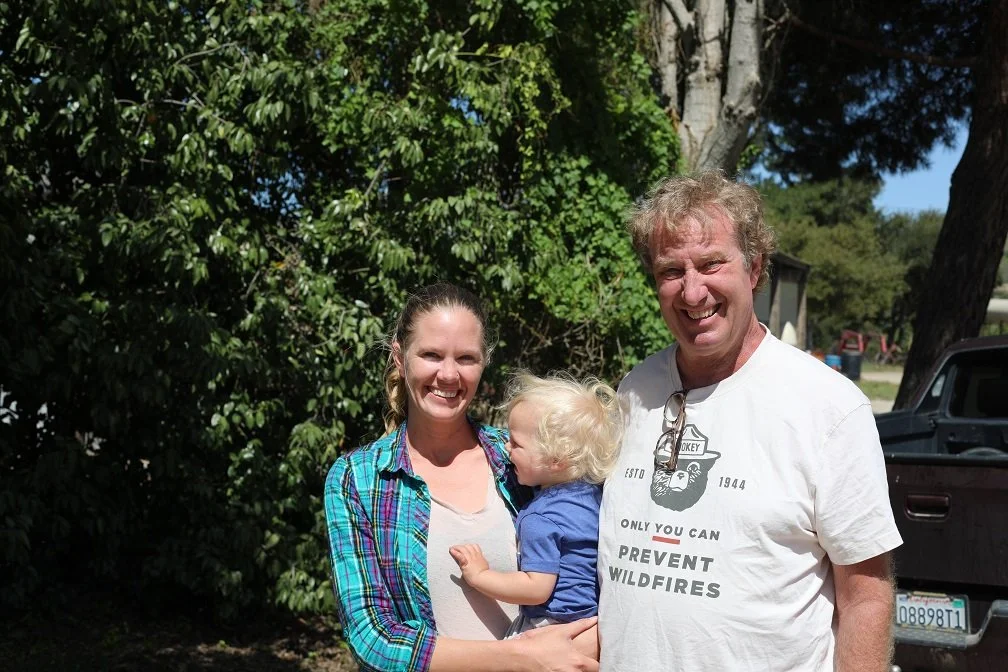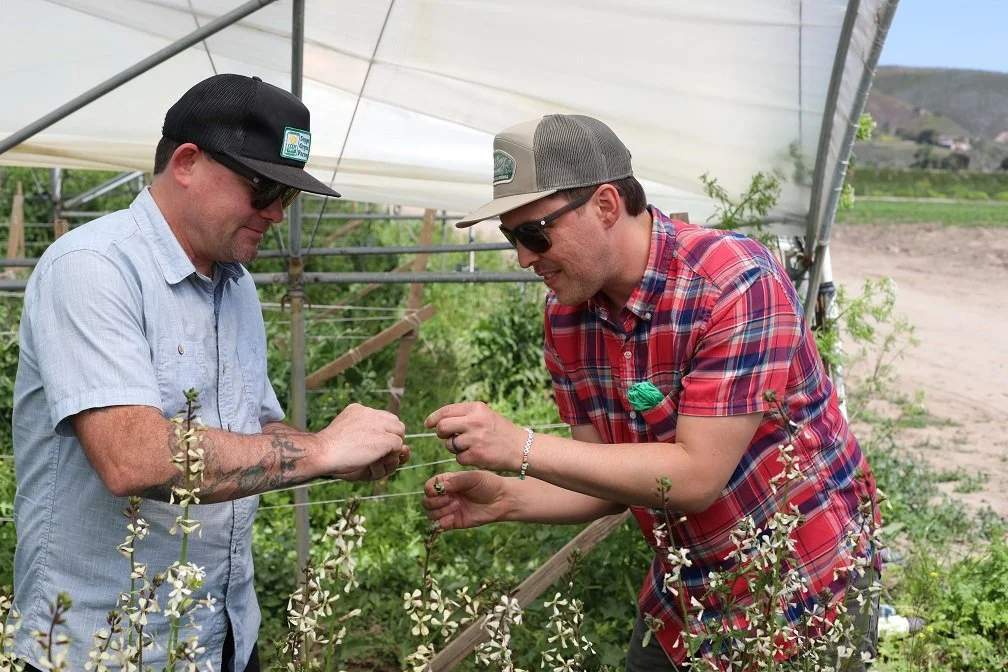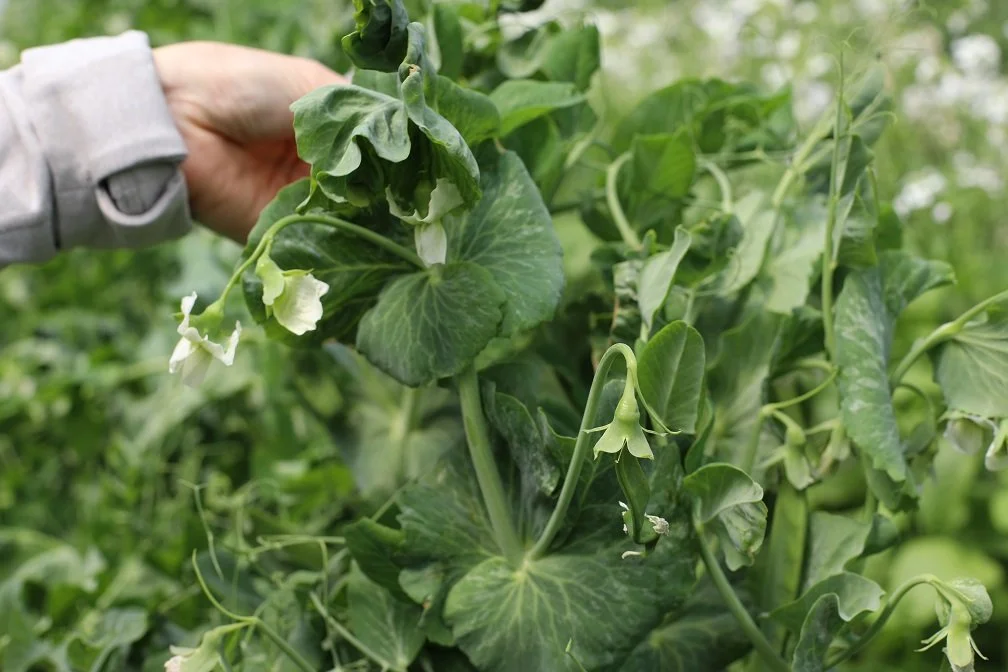FARM TOUR 2022: TUTTI FRUTTI
Just off the Santa Ynez river, surrounded by mountains on a slope near the ocean, Chris Caldwell of Tutti Frutti grows in an idyllic spot. “About 5 minutes off the highway,” he told us – and that’s in farmer time – as we slowly wound our way into the valley, passing other farms and vineyards. The sky was a pale blue, and the sun was strong as we exited the van, shed our Bay Area layers, and took in the breezy coastal air.
“It all started with garlic braids,” Chris told us as we ambled toward his greenhouses, tripping over thick roots and sundried tomatoes leftover in the soft soil. After working in construction for many years, he was drawn to farming. He surprised himself with the returns on a single acre of garlic, thinking, “what if I planted 5 acres?” The rest is history.
He farmed various plots in the Carpinteria area before finding and purchasing his current 350 acres, which boasts prime conditions for farming. The soil is incredibly rich, inherited from past landowners who farmed walnuts and beans for many years – the valley has been irrigated since the 1920s, and recognized for its excellent climate. “The morning fog is stable,” he told us, and “while the temperature can freeze down to 19 degrees and soar up into the 90s, it’s usually perfect and breezy.” (As a failsafe for those cold nights: he has a thermostat hooked up to sprinklers above his greenhouses – when the temps dip too low, the water turns on to create a perfect igloo, insulating the plants inside.)
He plants only once a year in each field, followed by cover crops for the winter like alfalfa, vetch, and beans. In fact, he told us that the soil is so healthy, he often ends up with more produce than he can sell. The result: succulent tomatoes that grow slow under the sun like a Pinot Noir, and the sweetest peas you can imagine.
If the plants don’t topple over, that is – the high winds climb up from the ocean, and while they can be difficult to work with, Chris told us that the wind is his friend: providing a natural deterrent to pests. And he wasn’t kidding, the valley acted like a wind tunnel, blasting us as we made it to the high tunnels.
After the winter lull, spring entails pea production in full swing, with each greenhouse carrying several rows over 1200 feet long. The plants were spotted with curly tendrils and the white flowers of future peas, and the snaps were too delicious to leave alone. We surveyed the tunnels, tasting and crunching as we went.
Farmers never waste space, of course – each row was interplanted with various vegetables: beets, cabbage, lettuces, arugula, and more. He’s already planting winter squash, tomatoes, peppers, and lots of hot chiles. While much of his veggie production goes to local farmers markets, we were sure to check out the rest of his beautiful crop. Fresh, pest-free romaine, bulk white cauliflower with hardy greens, and we even asked about the possibility of bunched pea tendrils.
Peas are quite a labor-intensive crop to harvest, and Chris told us it takes a crew of 55 to pick them all. There’s a general awareness among his workers, he said, that employment on an organic farm is a better, fairer, and safer experience; most of them had been burned by harmful pesticides on berries or fled from crop dusters in the past. The work is still arduous, of course, but organic is “safe, clean, and alive.” Chris was happy to report that the healthy air, chemical-free production, free housing, and good wage keeps his crew coming back year after year.
We are excited to come back year after year as well, maintaining our strong relationship with Chris Cadwell for over 30 years now, an incredibly sweet way to kick-off the California summer!









